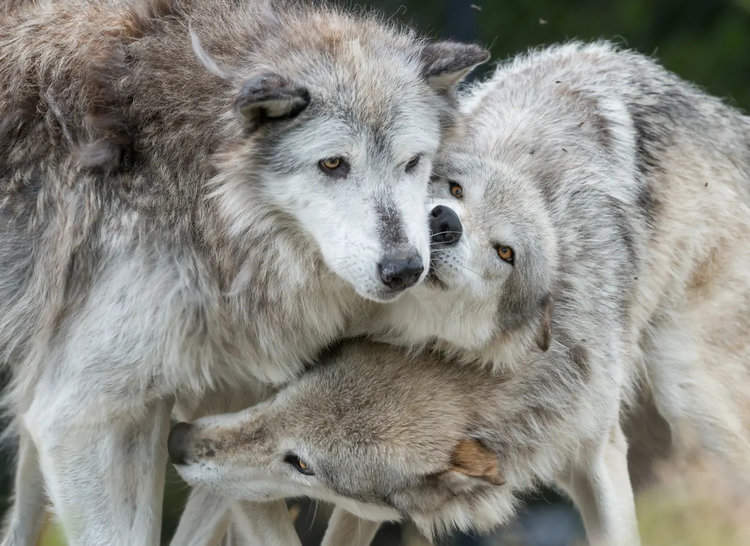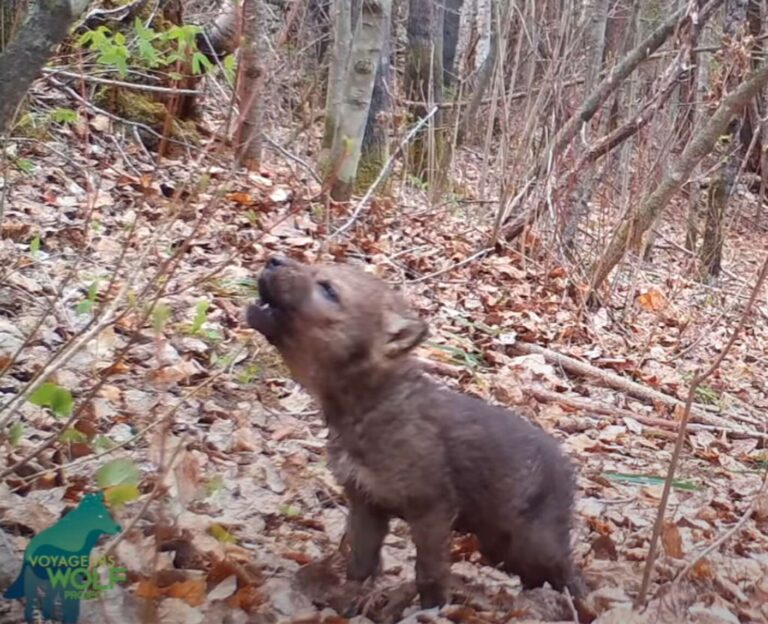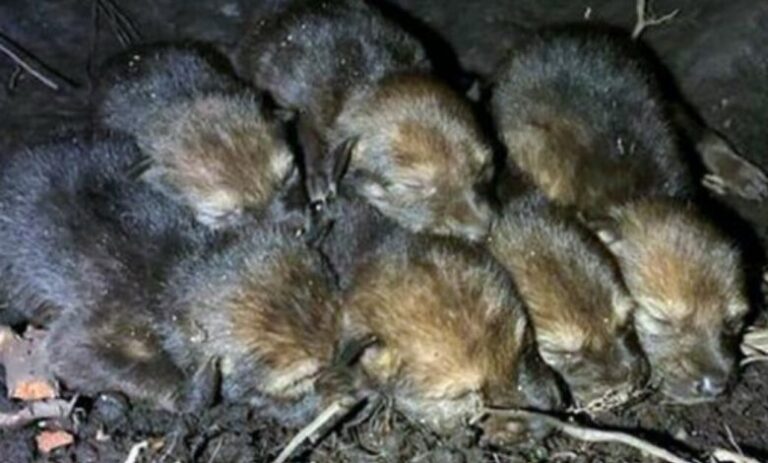The case for reintroduction of the wolf and other species should not be based on the promise of an ecological nirvana
In 1995, eight wolves were released in Yellowstone National Park from a white truck that had traveled 700 miles from Alberta, Canada. They were the first people to live in the park for 70 years, and the return of the most legendary predator to the most well-known national park in the world sparked research that would later be included in ecology textbooks for many years.
An important interpretation of this incident is that wolves in the park created a “landscape of fear,” which sparked significant habitat alterations, or “trophic cascades.” It is a defense used to support the release of wolves in other areas. But more and more scientists are questioning this perspective by examining the subtleties of what took place in the decades following the introduction of wolves.
In 1995, wolves were brought back into Yellowstone National Park. Image by Jim Peaco/NPS
Wolves’ ability to hunt grazing species like elk, whose abundance was harming the park, was one of the main effects they had in Yellowstone. Elk populations in Yellowstone’s northern range decreased from 19,000 in 1995, before wolves arrived, to roughly 6,000 in the years after their reintroduction. Elk were less abundant, which relieved pressure on willow and aspen trees and allowed them to grow.
Additionally, the wolves inadvertently altered how their prey moved about the park. Because of their dread of being attacked, elk started to graze less frequently in wide open river basins. As a result, ecosystems in new places were able to rebound, which benefited beavers, fish, small animals, amphibians, and insects, among many other species, by providing habitat.
According to Rick McIntyre, who was hired as a “wolf interpreter” in 1994, the year before the wolves arrived, “the aspen trees were the perfect visual method to demonstrate how effectively this reintroduction had worked.” Since then, he has spent nearly every day going outside to monitor the wolves and has written several books about them. He resides in the park’s northeastern part in the Silver Gate village.
On one site near the release pen, in the space of a few years, the aspen went from being constantly grazed down to producing tens of thousands of shoots, which created a forest “nearly as dense as a bamboo thicket”, he wrote in his book, The Rise of Wolf 8.
But the story was more complicated than that. The changes were partly due to wolves, but they were also caused by other factors, such as the rising number of mountain lions and bears and an increase in human hunting in the north of the park, as well as climatic changes, explains McIntyre in his book. “I’m sympathetic to the results those people published in the early years. It made sense. It explained a lot of things during that time period. But now, in some cases we’re 20 years down the road, and we have a better handle of all these other factors,” he says.
Today, the willow and aspen that thrived along rivers, creeks and marshes where lots of that early research was done have shrivelled because the water table has dropped, according to McIntyre. As the climate is getting warmer there is less of a snowpack, meaning less moisture available for spring plant growth, which is a big factor for the health and survival of aspen and willow. “There are factors that you could not have predicted, that have turned out to be very influential, and perhaps reversing some of the changes documented,” he says.
Ecosystems are large and chaotic, which makes researching them difficult, and some of the techniques used may have had limitations. A paper published in 2021 looked at how sampling only the tallest aspen in Yellowstone meant researchers overestimated how much it had regenerated by at least a factor of four compared with random sampling. The study concluded that the “results indicate the existence of a trophic cascade that was weaker than is often claimed”. Other researchers have warned against generalising the effects of wolves. In 2010, a paper concluded that the trophic impacts of wolves in Banff, Isle Royale and Yellowstone were all different.
When findings appear sensational the media tends to latch on to this optimistic vision, says Prof Dave Mech, a biologist at the US Geological Survey who studies wolves. For example, a 2014 YouTube video, How Wolves Change Rivers, has been viewed 43m times. But when those findings are challenged, most people don’t hear about it, because complex and nuanced stories are less appealing. “Scientists are just humans, and wolf reintroductions were such a popular thing and it got a lot of publicity. It’s human nature, it’s not unusual that people jump to these conclusions,” he says.
In the UK, calls to bring back wolves and lynx – another apex predator – are proving controversial, particularly among farmers, so it’s important for advocates to rationalise why they want to reintroduce these predators and what the implications will be, writes Dr Hugh Webster in British Wildlife magazine.
Webster wants to highlight that the case for reintroductions should not be based on the promise of an ecological nirvana. “People may be overselling that myth, possibly with the best of intentions,” says Webster. “You have to be so careful when making these sorts of promises, and that bothers me.”
Research on the impacts of lynx paints a complex picture. In Switzerland, the reintroduction of the cats drove a fall in the populations of roe deer and chamois, as well as changes in their behaviour. In Sweden and Norway, however, lynx recolonisation appeared to have no impact on how roe deer moved around in the landscape, suggesting how animals respond to these predators varies between ecosystems.
The UK is a country bereft of intact ecosystems, and bringing back large predators is often seen as a way to reduce deer numbers which are so high they are inhibiting natural woodland regeneration. The UK has a lot of deer because there is an abundance of habitat and food available – not just because there aren’t lynx and wolves hunting them.
Webster believes that conservationists should not be justifying reintroductions with arguments about the ecosystem services and trophic cascades they will create. “It’s a lovely story and it captures the imagination, but the science is not definitive on it,” he says.
A 2017 paper, “Can we save large carnivores without losing large carnivore science?” warned that researchers and conservationists increasingly tend to “ignore, disregard or devalue fundamental principles of the scientific method” when communicating the role large carnivores play in ecosystems. This erodes public confidence in large carnivore science, the researchers said.
Webster suggests that, rather than claiming predator reintroductions will fix complex ecological problems, it would be better to “champion their capacity to thrill and surprise us”, embracing their ability to enrich the human experience. The fact we can never be sure of what their impacts could be is part of the excitement, he says.
Prof John Linnell, who studies human and wildlife conflict at the Inland Norway University of Applied Sciences, says this is essentially a debate about values, and scientists can feel uncomfortable admitting its subjective nature. He says: “My personal values say that Europe is a better place when you have some big, wild, furry animals out there. It’s not because of this belief that they’re going to fix everything. They will introduce a wildness, but it’s not going to shift the whole system.”
The researchers quoted in this piece are all enthusiastic about wolves, but are realistic and respectful of the values of those with a different opinion. For them, wild places are richer if they include apex predators, regardless of whether or not they modify landscapes.
“I’m not questioning the objectives of getting large carnivores back into the landscape – I wholeheartedly agree for a whole set of reasons, from the esoteric to the more spiritual, cultural,” says Linnell. “We need to look at the rhetoric we use, and the narratives. I think honesty is really important, and being brave enough to embrace the subjectivity of our values is really central here.”
Reintroductions great and small
Bison In the UK, four European bison are due to arrive in north Kent in the coming weeks as part of a rewilding project to create more wildlife-rich woodlands. Bison, Europe’s largest land mammal, create dynamic habitats by knocking down trees, stripping off bark, nibbling vegetation and making dust baths. The European bison was first released back into the wild in 1954 in Poland. Reintroductions in several other European countries followed. The American bison has also been widely reintroduced.
Przewalski’s horse In Mongolia, about 760 Przewalski’s horses roam the steppes despite having disappeared in the wild in 1960. Reintroduction efforts in the early 1990s mean there is now a self-sustaining wild population.
California condor – The number of California condors in the wild fell to just 22 in the early 1980s. The few remaining wild birds were placed into a breeding programme in 1987 and then slowly released back into the wild. The 1,000th chick hatched in May 2019.
Beaver Often called “ecosystem engineers”, beavers help reduce flooding and silting and increase water retention. Last year, 17 were released into enclosures around England and Wales. There are even plans to reintroduce them in Tottenham, north London.
Giant clam Rewilding is spreading to the oceans with the reintroduction of creatures such as the giant clam in Fiji. Australian clams were imported to start a captive breeding programme, and their offspring have been released on to the island’s coral reefs.
White rhino – Thirty white rhinos recently arrived in Akagera national park in eastern Rwanda to create a new breeding ground to support the long-term survival of the species. Down to an estimated 18,000 animals across Africa, white rhinos have not inhabited Rwanda before.
Butterfly and dormouse – Not all reintroductions need to be big beasts. In the UK, the large blue butterfly, which disappeared in the 1970s, was reintroduced in the 1980s and recently returned to Gloucestershire after an absence of 150 years. The hazel dormouse, classified as vulnerable to extinction, was reintroduced in the Yorkshire Dales national park in 2016.






